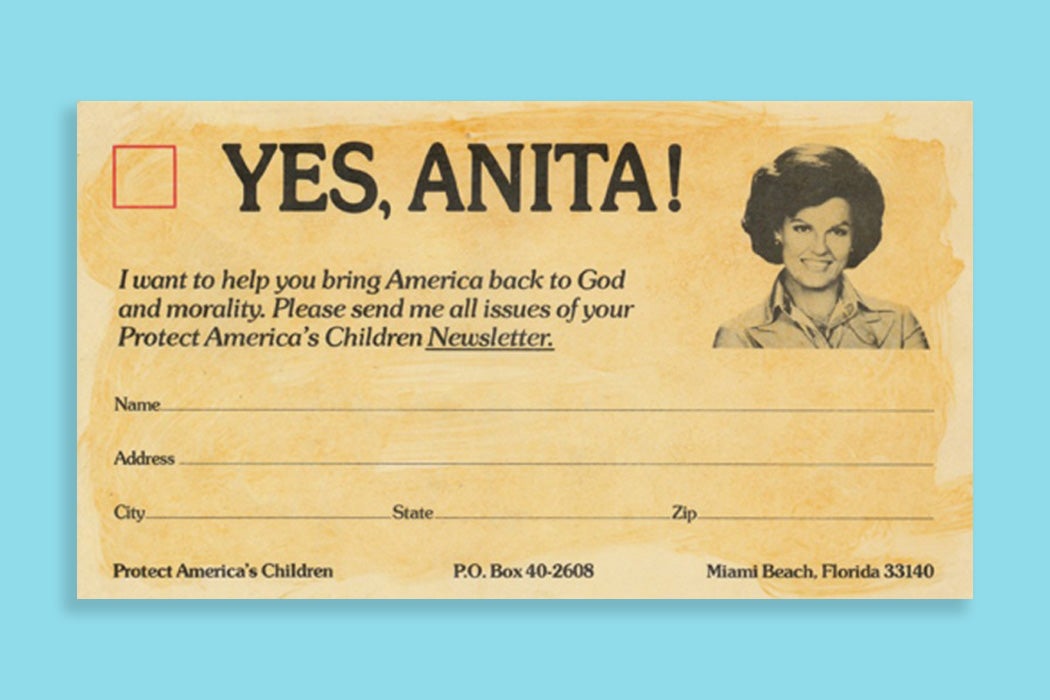Under the banner of parents’ rights and the protection of children, conservative activists organized to roll back rights for LGBTQ people in Florida. This is, of course, a story from 1977, when singer Anita Bryant became the face of a successful campaign against gay rights. Historian Gillian Frank tells the story.
Much like anti-LGBTQ activism today, the organization that Bryant represented, Save Our Children (SOC), was closely aligned with right-wing organizing around race in the schools. In the 1970s, Frank writes, Florida was one of the flashpoints in the national fight over integrating schools by busing children across residential color lines. Anti-integration activists generally presented their arguments in terms that were technically racially neutral, like in a message from one conservative leader to President Richard Nixon.
“There is truly no prejudiced racist people,” he wrote. “The conditions in the predominantly black schools are absolutely unacceptable to a people whose moral standards are so vastly different.”
Anti-integration protesters put this idea in terms of child protection. As one white mother declared at a 1977 rally in Dade County, “We don’t want to lose control of our children, and that is what happens when they are bused.”
Meanwhile, Frank writes, in 1976, a liberal gay-rights organization called the Dade County Coalition for the Humanistic Rights of Gays (DCCHR) successfully pushed the Dade County Commission to pass an ordinance protecting gay men and lesbians against employment and housing discrimination. In response, conservatives and religious leaders, including some who were also at the forefront of the anti-integration fight, formed SOC.

As its name suggests, Save Our Children presented its purpose as child protection. Its members warned of gay teachers “flaunting” their sexual orientation and “recruiting” children to homosexuality. And they focused particularly on the private schools that offered all-white environments for families fleeing integration. In its materials, SOC argued that these schools could be forced to hire “homosexuals no matter how blatant their perverted lives may be.”
Weekly Newsletter
As SOC advanced a referendum to overturn the gay-rights ordinance, DCCHR fought back with a campaign that leaned heavily on comparisons between Black and gay civil rights struggles. However, on the whole, the gay-rights activists made little effort to seek support from voters of color. Frank writes that they viewed the local Cuban community as too anti-gay to bother with while assuming that Black voters would automatically take their side based on their civil rights rhetoric. Ultimately, SOC’s side won the referendum with an overwhelming 69.3 percent of the votes, including 80 percent of Latino votes and about half of Black votes.
Conservatives across the country celebrated and, in the years that followed, waged more campaigns using the same strategies, centering the rights of parents and the supposed hazards gay people presented to children. Meanwhile, gay activists leaned away from framing their concerns in terms of civil rights. Instead, many adopted coming out to friends and family as a political strategy, responding to “Save Our Children” with their own slogan: “We ARE Your Children.”
Support JSTOR Daily! Join our membership program on Patreon today.







